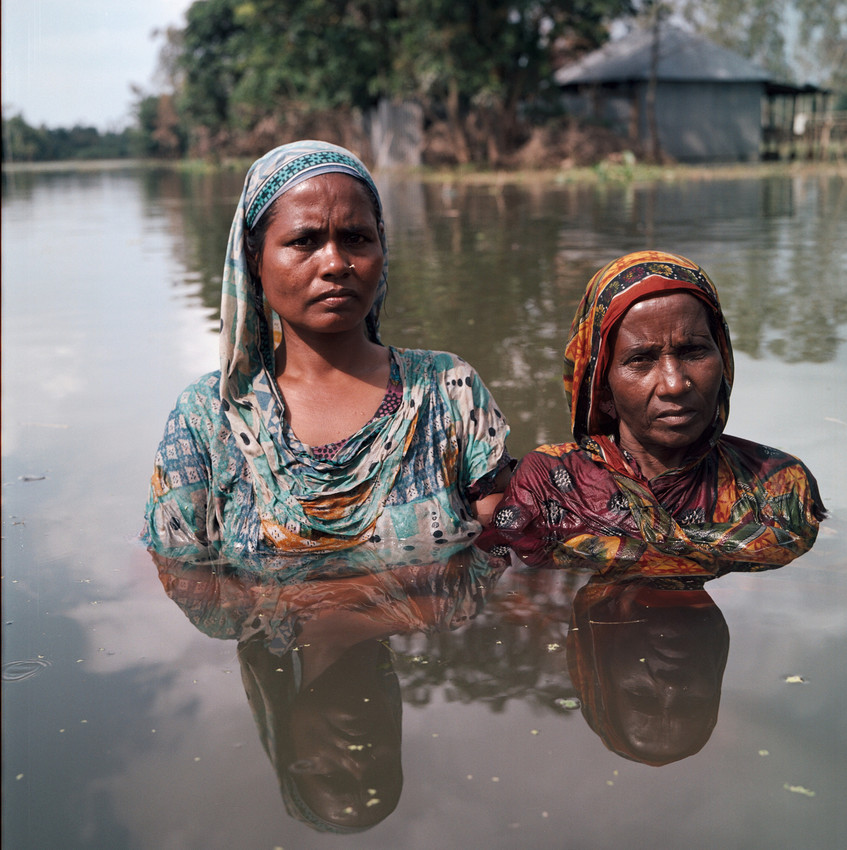Delivering on the Promise of Climate Finance
Over a decade ago, Canada and other wealthy countries made a commitment to deliver $100 billion per year by 2020 to help developing countries adapt to climate change and take action to reduce emissions. This so-called climate finance is not charity. It is a commitment aimed at addressing the injustice rooted in the climate crisis, which is marked by inequality.
People in low-income countries who have emitted the least in carbon emissions are the ones suffering the most severe consequences of global warming. In fact, the world’s richest one per cent are responsible for more than twice the carbon pollution as the poorest half of humanity. And, unlike the poor, the richest have the means to buffer themselves against the worst impacts of climate change. That’s why climate finance is so critical to helping vulnerable communities deal with the impacts of a crisis they did little to create.
Yet while this funding is urgently needed, wealthy countries have been short-changing developing countries when it comes to funding climate initiatives as they have yet to deliver on their $100 billion annual commitment. This funding shortfall is adding up to billions of dollars each year and many lost opportunities to support women, youth and vulnerable communities in tackling the climate crisis.
The Missing Dollars: Tallying up the funding shortfall to developing nations
The Organization for Economic Co-operation and Development (OECD) recently reported that donor countries provided around US$80 billion in climate finance in 2019, adding another US$20 billion to the amount owing from past years of funding shortfalls.
The science clearly indicates that the effects of climate change are becoming worse. In this light, the $100 billion annual target already sets a low bar for support. The UNEP estimates that as a result of the escalating impacts of climate change, developing countries’ adaptation financing needs alone could climb to USD 140-300 billion by 2030 and USD 280-500 billion by 2050. Ahead of COP26, Indian and African climate negotiators are calling on developed countries to provide trillions in annual funding to assist developing countries in adopting cleaner technologies and adapting to the effects of climate change.
While the final accounting is not yet available, 2020 is again chalking up to be another slim year where wealthy countries failed to deliver even on the $100 billion commitment. Unless wealthy countries meet their full commitment and realistically assess future needs in discussions on post-2025 finance, this shortfall will continue to grow in the coming years and precious time will be lost in helping women prepare for greater climate hardships.
In the lead up to COP26 in Glasgow this November, Canada stepped up to co-lead, with Germany, an effort to map out a plan that may finally see wealthy nations fully deliver on the long-standing promise of $100 billion annually in climate finance. Although a few countries have significantly increased their climate finance commitments for the next five years, including Canada, the US, and most recently New Zealand, the increases are not enough to close the gap this year, or the next few years. Without factoring in last-minute funding announcements ahead of COP26, Oxfam’s analysis of existing pledges indicates governments could take as long as 2025 to finally deliver on the $100 billion annual commitment.

Lipi and Zeyda from Bangladesh are standing in the water that flooded their homes and community near the Jamuna River once again due to climate change. Photo: Gideon Mendel/Oxfam
The Real Value of Climate Finance
The potential benefits of climate finance, if well deployed, are enormous. For example, women’s rights organizations in developing countries would have more funding to help their families overcome the threat of hunger by shifting to drought-resistant crops and building their climate resilience. The money could go to establishing early warning systems that may save lives by giving people living in exposed communities time to seek shelter before cyclones or typhoons hit. Or it could be lighting up homes and businesses with clean, reliable and renewable energy so kids can study and women can start new businesses. But instead, many women and youth are left to deal with rising hunger, poverty and an uncertain future as wealthy countries fail to live up to their responsibilities.
While the delivery plan for the $100 billion will speak to the quantity of finance committed, it’s also important to improve the quality, accessibility and effectiveness of climate financing. Canada and all governments should ensure climate financing reaches the people experiencing increased vulnerability due to climate change.
Women, youth and Indigenous people experience the brunt of the adverse impacts of climate change because of ongoing inequalities and discrimination that limit their access to resources that could otherwise help them to adapt.
What’s more, we need governments to increase their climate finance without further indebting countries that have contributed the least to this crisis. Adaptation financing in particular should be provided in the form of grants, not loans, to ensure low-income countries have the means to respond without cutting other essential public services.
So why aren’t wealthy countries prioritizing climate funding, especially when developing countries need this support more than ever as they struggle to contend with the ongoing pandemic and eventual recovery? Ultimately, it’s a matter of political will. To help build that will, it’s time for us to speak out and let governments know that we not only want to see them deliver on this commitment, but that millions of women around the world are counting on them to do so. It’s not an act of charity but rather a matter of climate justice.
Join Oxfam in calling for a delivery plan that will see countries stepping up now to meet their full responsibility for climate finance and send a message that funding for adaptation and gender-responsive climate finance is needed to support women in their fight for climate justice.
Anya Knechtel is a policy specialist leading policy work on climate change and natural resources at Oxfam Canada.

